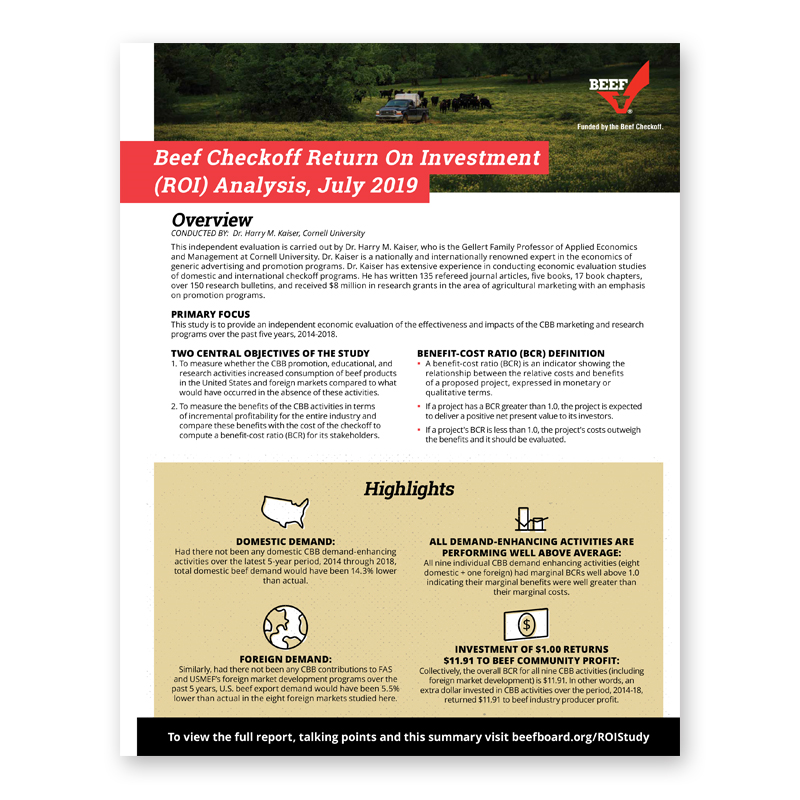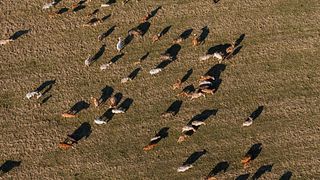The Beef Checkoff Program
What is the beef checkoff?
The Beef Checkoff Program is a producer-funded marketing and research program designed to increase domestic and/or international demand for beef. This can be done through promotion, research and new product development, and a variety of other marketing tools. The Cattlemen's Beef Board and USDA oversee the collection and spending of Checkoff funds.
How can beef Checkoff Dollars be used?
Who pays the dollar?
By law, all producers selling cattle or calves, for any reason and regardless of age or sex, must pay $1 per head to support beef/veal promotion, research and information through the Beef Promotion and Research Act, which is the 1985 enabling legislation for the Beef Checkoff Program. The buyer generally is responsible for collecting $1 per head from the seller, but both are responsible for seeing that the dollar is collected and paid.
In addition, the Checkoff is collected at the same rate on every live beef animal imported and at the equivalent rate of $1-per-head on all beef products that are imported.
is anyone exempt from paying the dollar?
Producers of 100 percent USDA-certified organic products are exempt from most commodity Checkoffs, based on separate legislation, but they must meet strict requirements and re-apply for certification on an annual basis. No other producer is exempt from the Beef Checkoff, according to the Beef Act. Buyers who resell cattle no more than 10 days from the date of purchase may file a non-producer status form and avoid paying an additional dollar. They are, however, responsible for remitting collected funds and reporting any transactions to the Qualified State Beef Council.

